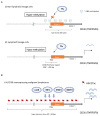CD30 Expression and Its Functions during the Disease Progression of Adult T-Cell Leukemia/Lymphoma
- PMID: 37240076
- PMCID: PMC10218159
- DOI: 10.3390/ijms24108731
CD30 Expression and Its Functions during the Disease Progression of Adult T-Cell Leukemia/Lymphoma
Abstract
CD30, a member of the tumor necrosis factor receptor superfamily, plays roles in pro-survival signal induction and cell proliferation in peripheral T-cell lymphoma (PTCL) and adult T-cell leukemia/lymphoma (ATL). Previous studies have identified the functional roles of CD30 in CD30-expressing malignant lymphomas, not only PTCL and ATL, but also Hodgkin lymphoma (HL), anaplastic large cell lymphoma (ALCL), and a portion of diffuse large B-cell lymphoma (DLBCL). CD30 expression is often observed in virus-infected cells such as human T-cell leukemia virus type 1 (HTLV-1). HTLV-1 is capable of immortalizing lymphocytes and producing malignancy. Some ATL cases caused by HTLV-1 infection overexpress CD30. However, the molecular mechanism-based relationship between CD30 expression and HTLV-1 infection or ATL progression is unclear. Recent findings have revealed super-enhancer-mediated overexpression at the CD30 locus, CD30 signaling via trogocytosis, and CD30 signaling-induced lymphomagenesis in vivo. Successful anti-CD30 antibody-drug conjugate (ADC) therapy for HL, ALCL, and PTCL supports the biological significance of CD30 in these lymphomas. In this review, we discuss the roles of CD30 overexpression and its functions during ATL progression.
Keywords: ATL; CD30 (TNFRSF8); CD30L (TNFSF8); HTLV-1; TNFRSF; TNFSF; lymphomagenesis; super-enhancer; trogocytosis.
Conflict of interest statement
M. Nakashima and K. Uchimaru report a research grant from Takeda Pharmaceutical Company Limited.
Figures



References
Publication types
MeSH terms
Substances
Grants and funding
LinkOut - more resources
Full Text Sources
Medical

